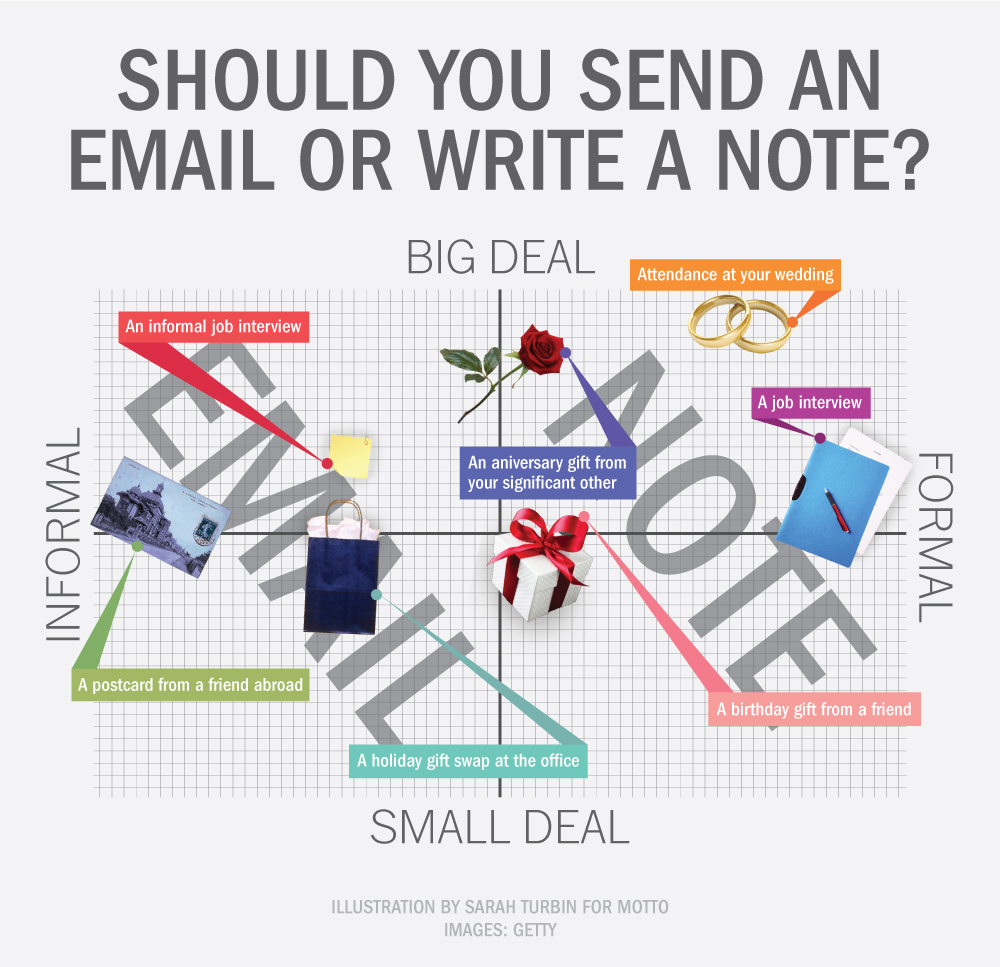If you’ve seen The Tonight Show‘s “Thank You Notes” segment or Spike Jonze’s Her, you might dismiss handwritten cards as a thing of the past. And if you’re talking pure volume, you’re on to something: The number of emails sent or received worldwide per day is more than 205 billion, according to market research firm The Radicati Group. That’s a figure that would be hard for snail mail to beat.
But rare as handwritten thank you notes may be, they’re still a great way to help you make a good impression after you receive a gift, go on a job interview or attend an event.
Read more: This is the Secret to Success Most People Never Learn
“Thank you notes are not a dying art,” says Lizzie Post, spokesperson of the Emily Post Institute and co-host of the Awesome Etiquette podcast. “It’s something we’re all concerned with, something we continue to write and find great value in. At the end of the day, we all want to be recognized and we want to tell somebody that they’re appreciated. That’s human nature.”
But how can you tell when it’s appropriate to send a handwritten card and when it’s acceptable to shoot off a thank-you email? We suggest you keep this infographic handy:

Also good to keep in mind: The biggest downside of good old-fashioned pen to paper is the time lost in transit. For formal job interviews where timeliness could make or break you, consider a double-whammy. Fire off a thank-you email post-interview, and then mail a tactile note. You can make the email brief and flesh out your ideas in the written note, or vice versa. The key is to capitalize on business-savvy efficiency as well as how personable you are.
More Must-Reads from TIME
- L.A. Fires Show Reality of 1.5°C of Warming
- Home Losses From L.A. Fires Hasten ‘An Uninsurable Future’
- The Women Refusing to Participate in Trump’s Economy
- Bad Bunny On Heartbreak and New Album
- How to Dress Warmly for Cold Weather
- We’re Lucky to Have Been Alive in the Age of David Lynch
- The Motivational Trick That Makes You Exercise Harder
- Column: No One Won The War in Gaza
Contact us at letters@time.com



